Inside Architect’s Own House with Hidden Garden


“We find the beauty in imperfection,” the owners of Kami House shared with us.
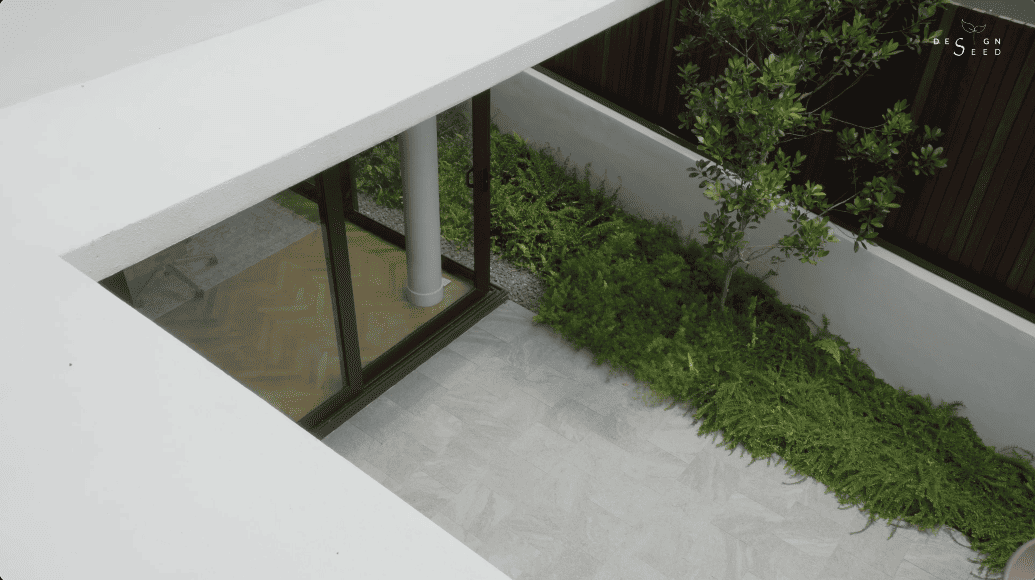
“A lot of this house is not perfect, but we love it the way it is. Like when we order Grab, a lot of them, when you open the door, say, ‘I can’t find the main entrance!’ Because sometimes, in the comment, we say, ‘Just leave the item on the table at the main door.’ That’s why they always call us, and when we open the door, they are surprised to see that there’s a garden inside.”

This young couple returned to Malaysia after seven years working in Australia and Scotland. They started their lives in a 1,000 square feet apartment, and in one and a half years, their family grew. They realized they needed a bigger space. After looking through the familiar grounds they were already adapted to, this property revealed itself.
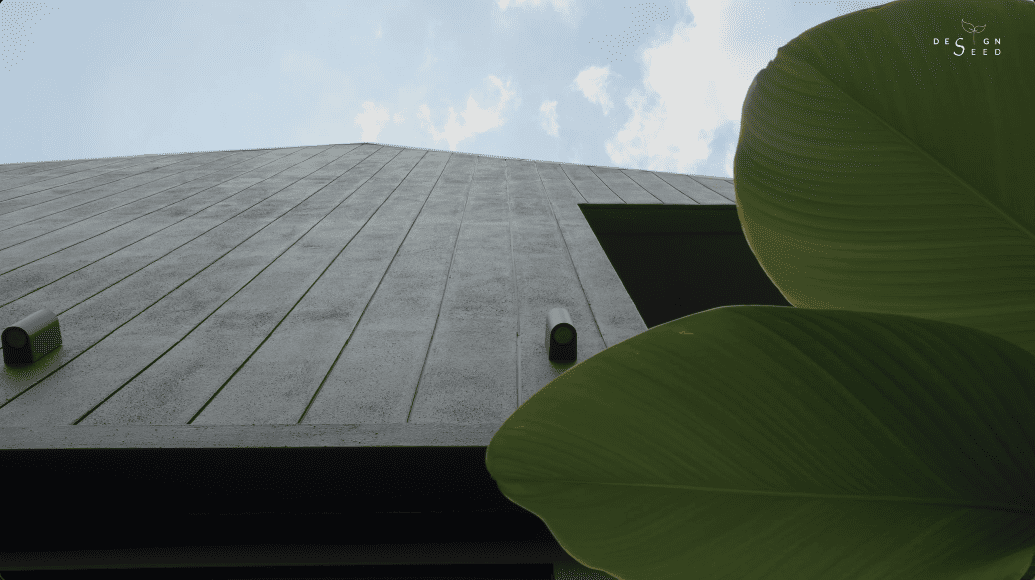
My name is Alex Lee, and in today’s episode of Design Seed, we will be revealing a transformation of a two-storey terrace house that initially looked like this. With the influential impact of design and architecture, the transformation turned out like this.
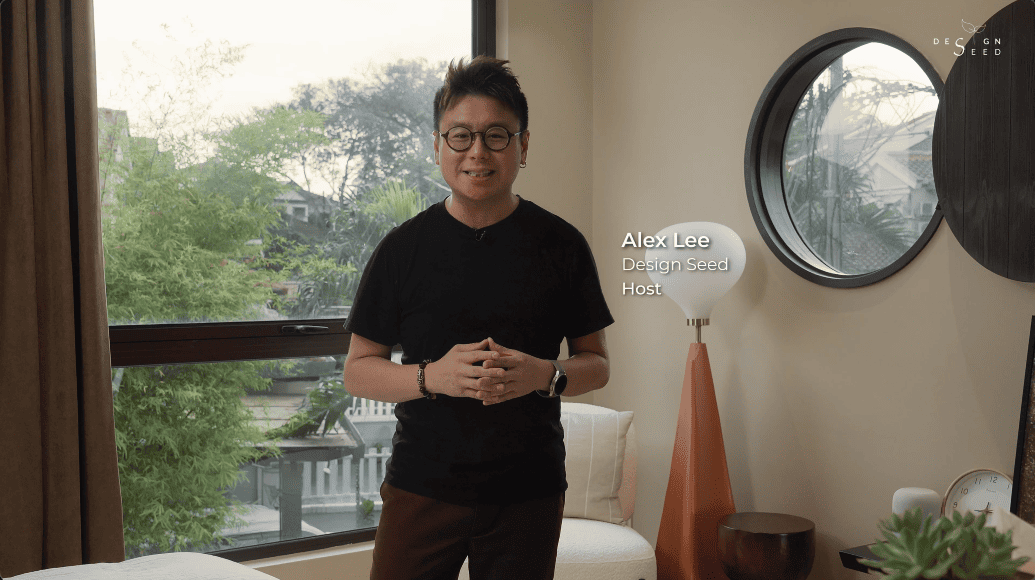
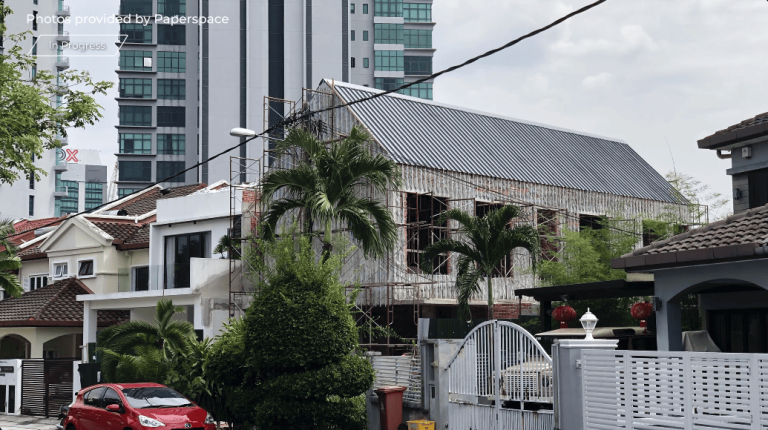
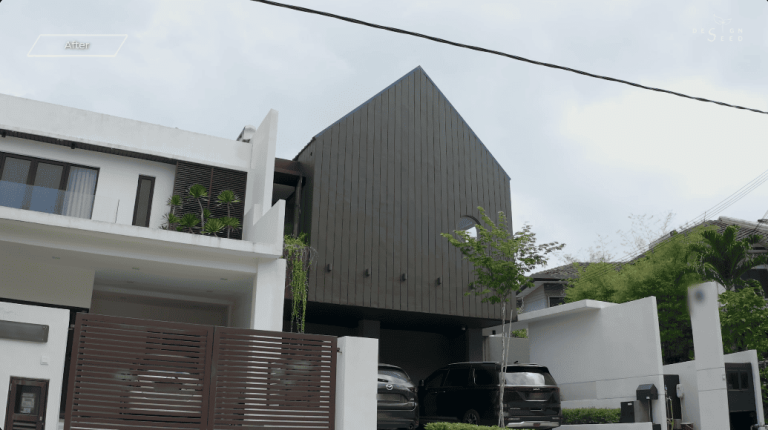
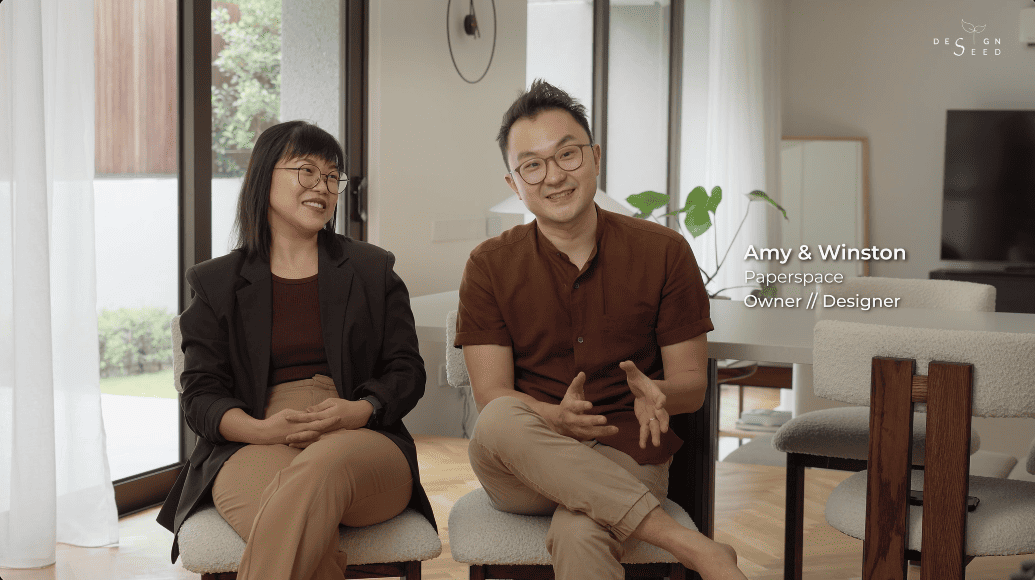
“Hi, I’m Winston. I’m the co-designer of the house. We’re husband and wife, and we started Paperspace together. Of course, any architect or designer always has the dream to design their own house, so we’ve been very fortunate to be able to do it.”
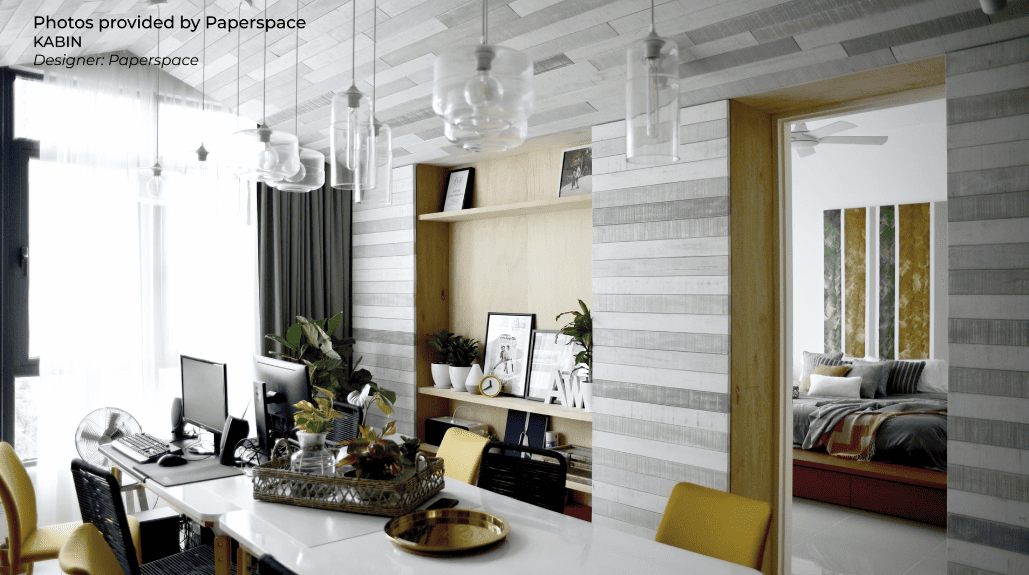
“We actually had the apartment we bought way before. We named our project with a pet name—there was ‘KABIN’ and this is ‘KABIN 2.0’ / ‘KAMI.’ ‘Kami’ in Malay means ‘Us’, and Winston and Amy named this project after the idea of building a house for themselves. They named it ‘A House for Us’, and that’s where the name ‘KAMI’ came from.”
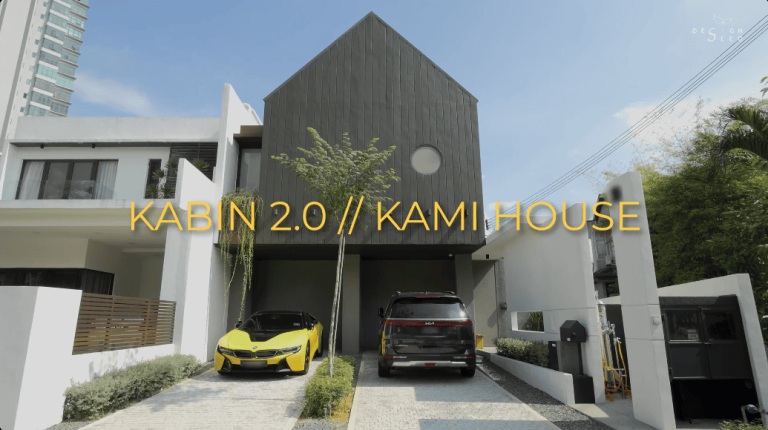

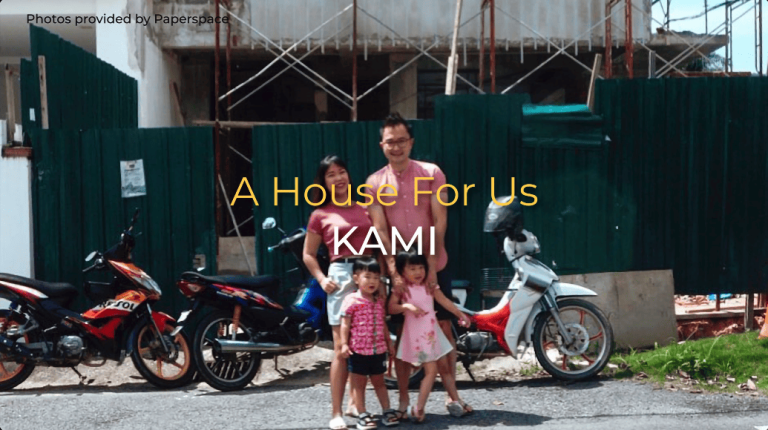
Unlike most homeowners who would opt for rectangular and symmetrical layouts, Winston and Amy, the proud homeowners and also designers of the “KAMI” House, were captivated by this property because of its non-conventional land size.
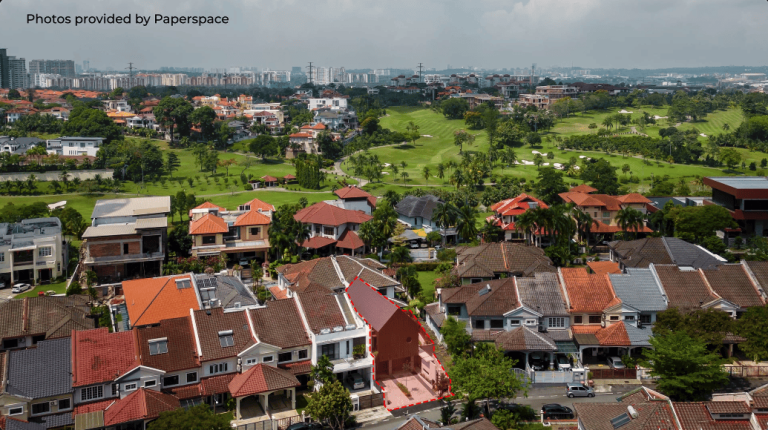
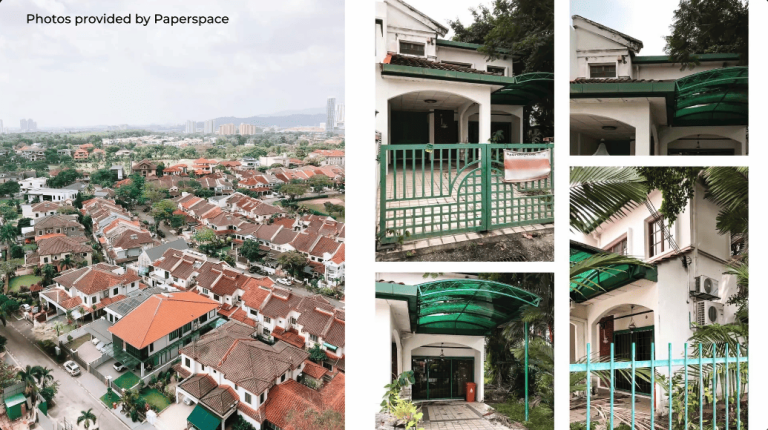
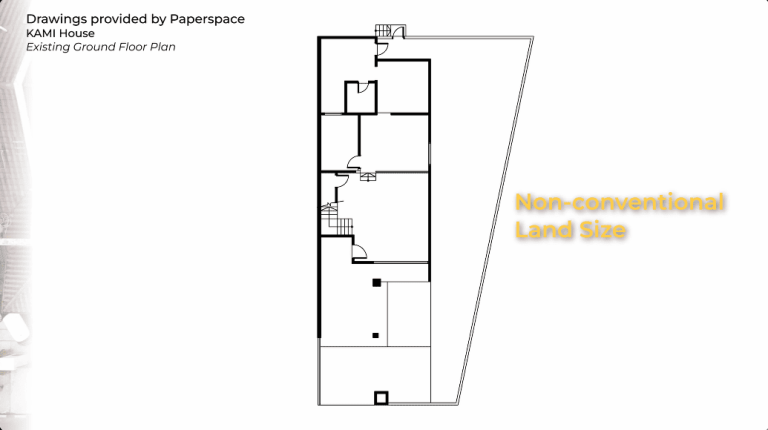
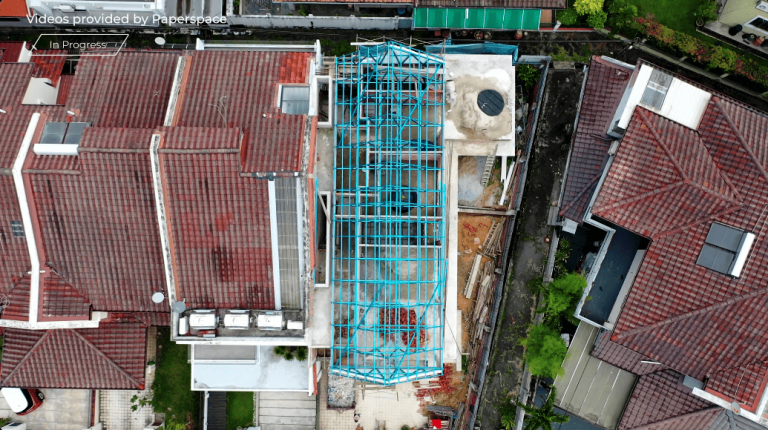
“So, obviously, we drove around while we were looking for a house, and funnily enough, this is actually the first house we drove by. It’s an abandoned house, almost 20 years old, and we immediately saw potential because it’s a very unique lot. It’s called an “end lot” in Malaysia, and so there’s a little garden and it faces a little pedestrian path next to us. We find it very private,” the owners shared.

“Because the lot is triangular, that’s why it gave us the potential to extend.”
The clever space planning that the designers did to the existing floor plans was simple yet impactful. Reorienting the staircase allowed for a more spacious living area, and bringing down most of the walls achieved an open floor plan that now enjoys the view of the site courtyard.”
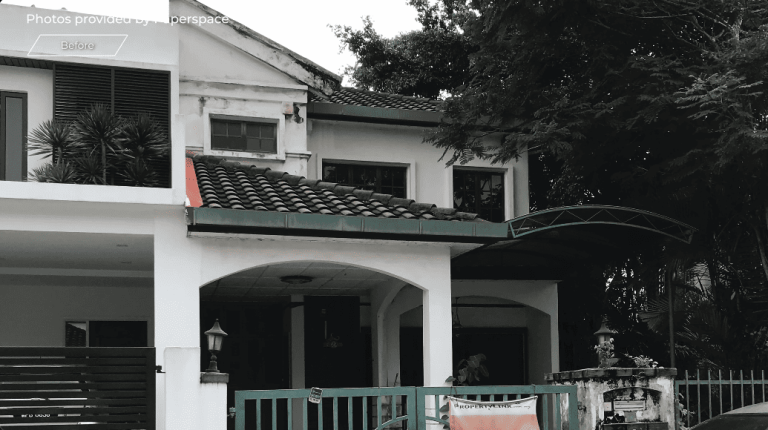

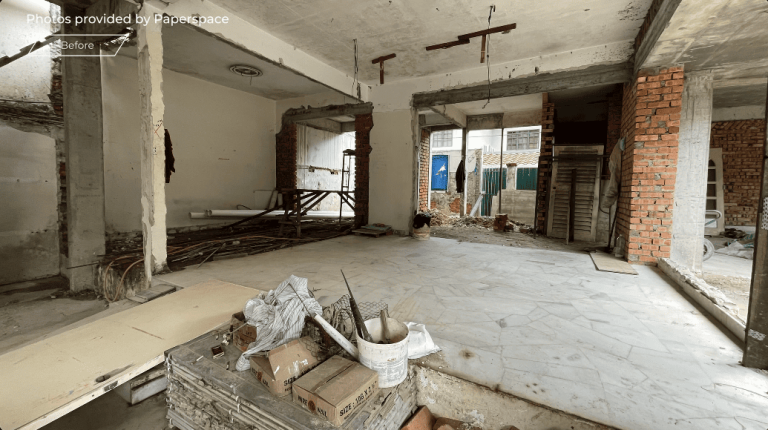
“Basically, the structure of the house is the old structure, and there’s always the challenge with designing a terrace house. That’s what makes it interesting as well because you work around the structure, and then it comes up with something unique.”
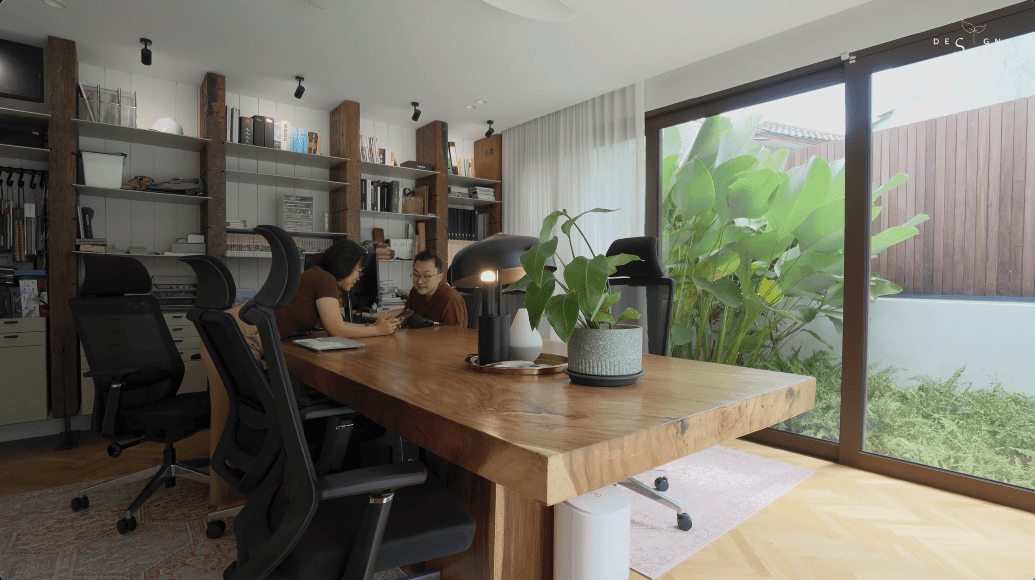
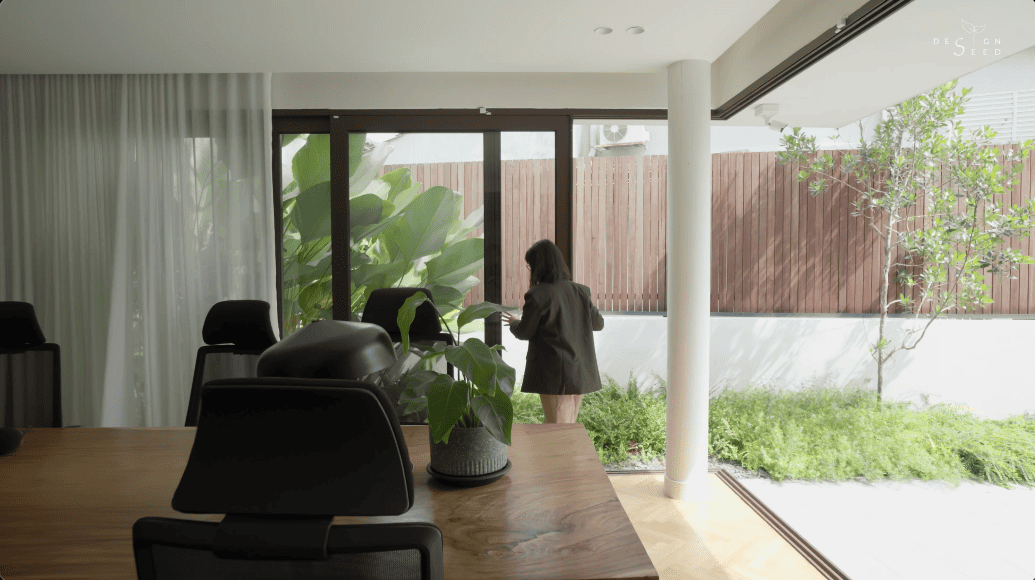
“The unique aspect of the home office is the corner sliding doors, which open up completely and convert the office into an outdoor pavilion-like space. So, we always work from home. As you know, designers and architects, we are kind of workaholics in some ways. So, we work a lot, and we want to spend time with our family as well. It makes sense for us to have a home office that is sort of like an annex to the existing house.”
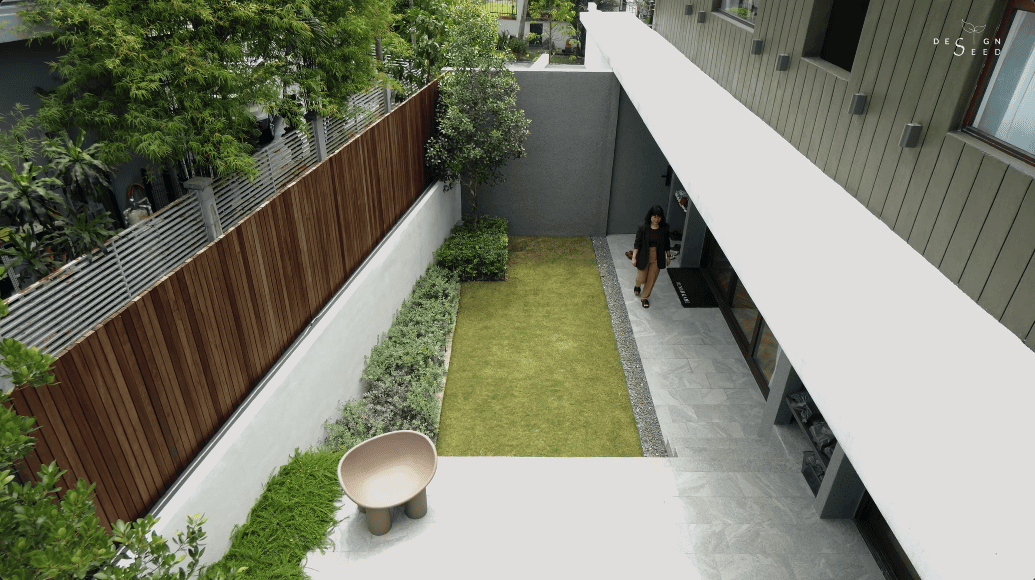
“That way, we can have the clients walk through the courtyard before coming into the home office itself without actually interrupting the private lifestyle. That’s another factor that made us choose this house. Because of the lot, how it is, it allowed us to plan the house so that the home office is split—attached to their home, but yet segregated away from invading their privacy.”
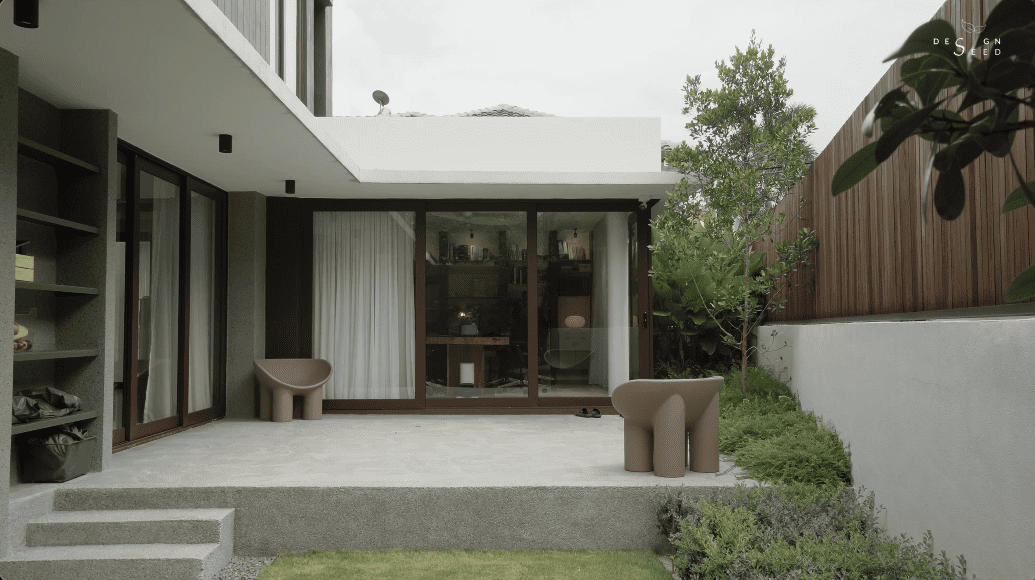
Leaving sufficient setback based on the authority’s guideline, a lush garden of landscape cocoons the home office, keeping the vibe in the office often refreshing and energizing.
The most interesting change they did to this floor plan is to transform this irregularly shaped garden into a side courtyard that is now the central highlight of the property. Hidden behind a high-textured wall entrance, once the door opens, it gives you the impression as though you have teleported to a different country.
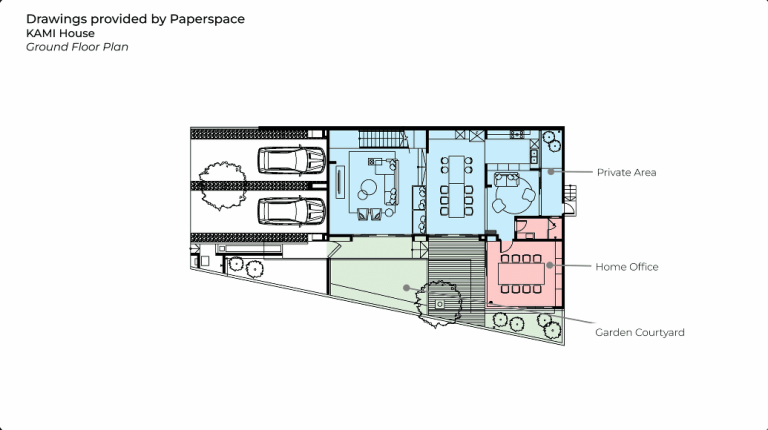
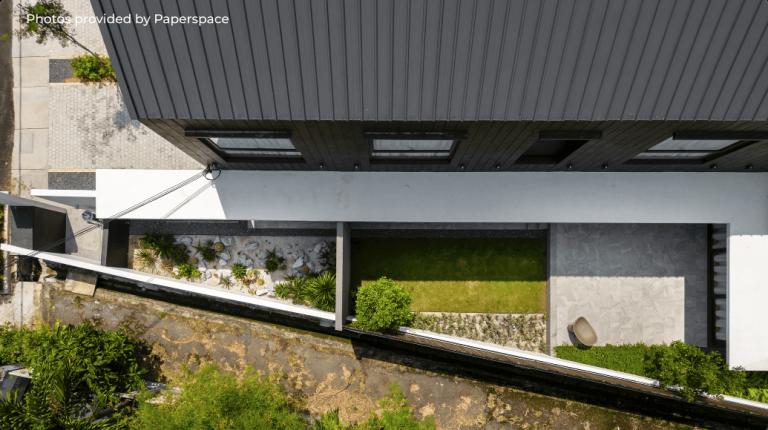
“I think it’s a lot inspired by tropical architecture, like Geoffrey Bawa’s work in Sri Lanka. You always come through a house where you have high walls, it’s very private, and when you walk in, you always come to a little courtyard where it serves as a barrier. In case of any break-in, you don’t come into the house.”
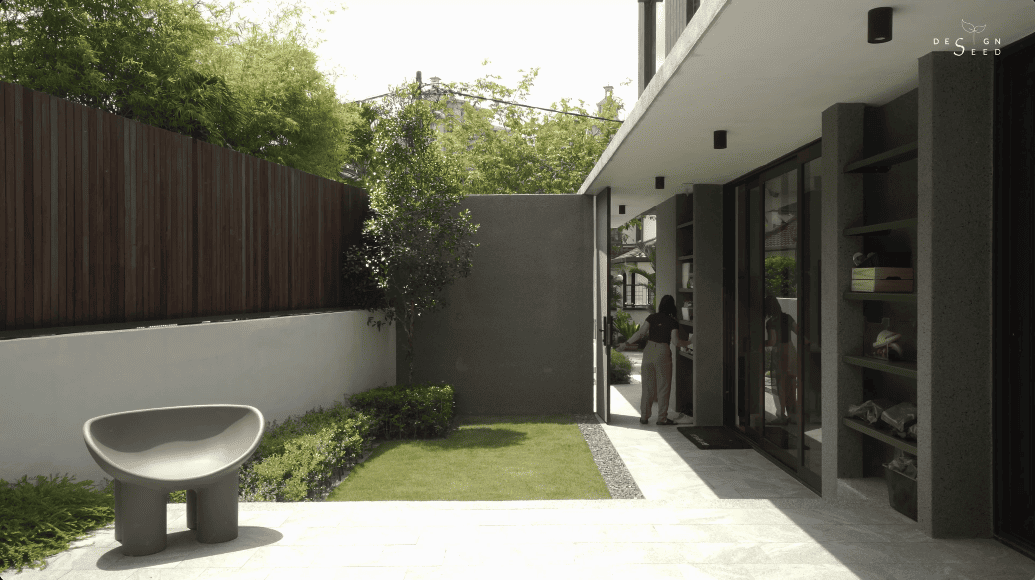
“Inspired by many tropical resorts, we transformed the garden into an internal courtyard, which provides a safe haven for our kids to play in. As you enter the premises, a commodious courtyard with lush landscaping greets your arrival. A stretch of Chengal wood fencing with lighting keeps the courtyard private and enclosed.”

“So, I think on the outer side, we wanted something that’s easy to maintain as well. If you see, there are a lot of natural stones. Even the car porch is made of granite stones, and we wanted something easy to maintain. We decided to go with a dry garden, a cactus garden. We only need to water it maybe once every 4-5 days. And then, we wanted something totally different out there, obviously cactus.”

“We have kids, so we don’t want them to be touching the cactus all the time. So for the internal garden, we wanted something very green—something that is comfortable for them to step on. Because the rain in Malaysia is pretty crazy, when the rain falls, there’s always a little area where the rain falls, and the plants won’t survive there. It’s always dead. So we actually provided this barrier where there’s drainage running below the little stones.”
“So, first of all, we get to prevent dead spots. Secondly, we actually mask the drainage with a feature as well, so it’s like a ‘two birds with one stone’ thing.”
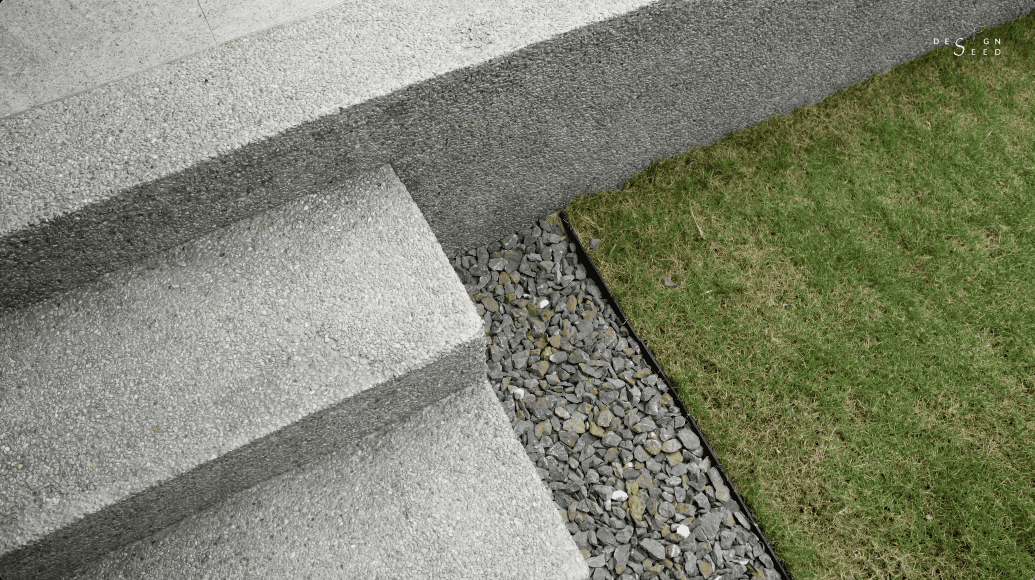
“We didn’t want the main door to be so conspicuous, so that’s why we planned it so that the main door is hidden. I think security is very important as well, so there are just a number of security measures that we’ve taken. We don’t have an auto-gate. The reason why is because we are socially conscious. Having a gate outside for our car actually contributes to congestion outside, because then our guests will have to park outside.”
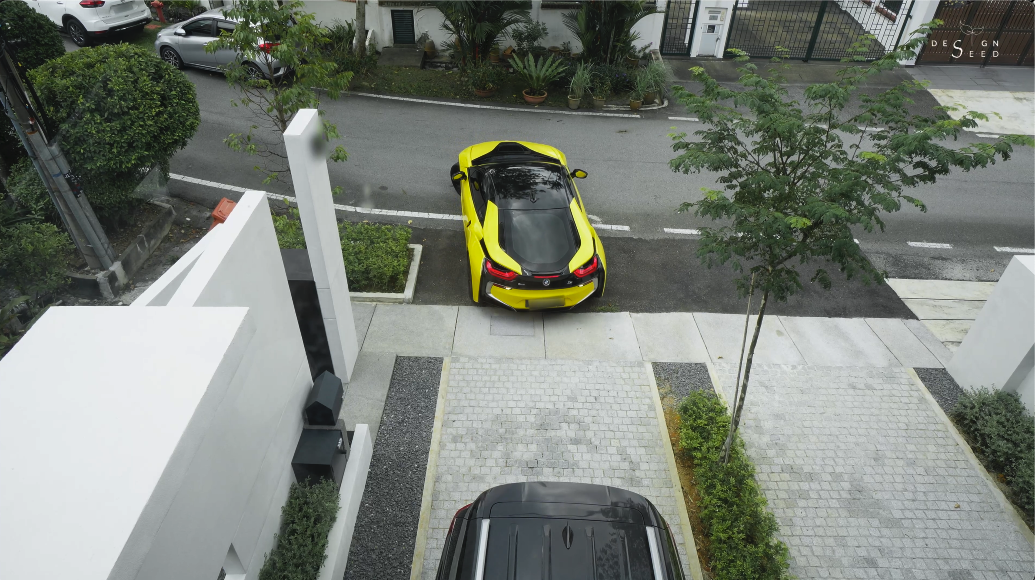
“Whereas, by taking it off, we have natural tandem parking. We actually allow up to 5 parking spaces without blocking the outside. But the way we design, like a hidden main door, supplements the loss of the auto-gate. From upstairs, when you walk out, there’s actually a natural barn door as well that we use as a night security door.
So these are the other measures we took to compensate for not having grills.”

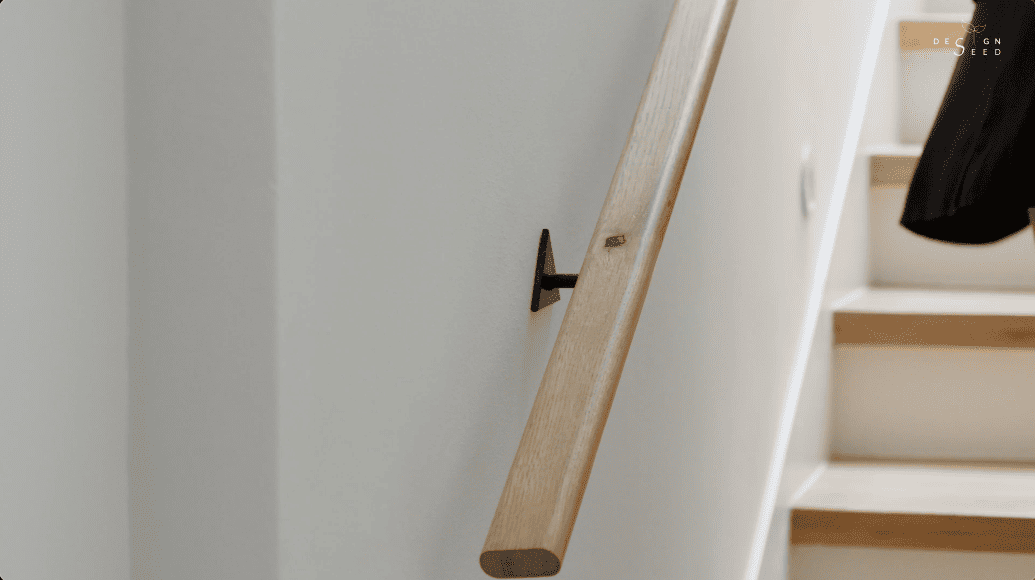
“He actually is a bit more playful in terms of designing. There’s still a little boy inside every man, I believe. For example, the mailbox—I wanted to do something funky, something fun that reflects the house, so that’s one of the playful elements. We like to play with geometry and patterns, like what we did with the triangular staircase handrail brackets, which is not common but is consistent with the architecture.”

“The “KAMI” house is an evolved interpretation of the modern farmhouse that fits our tropical climate. I guess you can say that this entire architecture is very much a modernized “Rumah Kampung” (village house). So literally, the planning is very straightforward. We kept it very practical, we just expressed it in a more playful and funky way.”

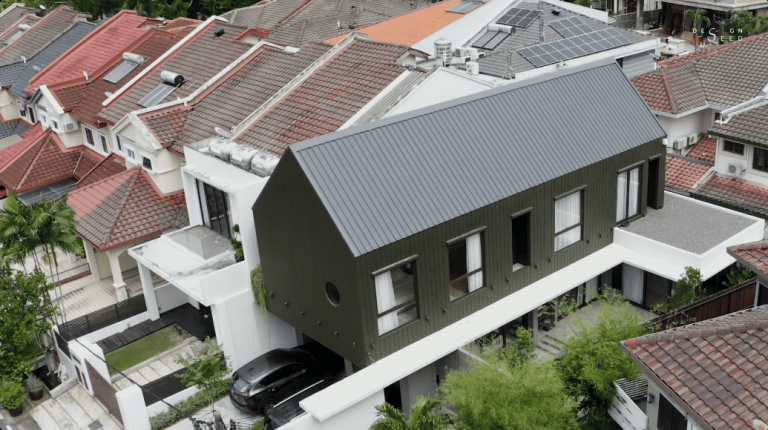

“Yeah, like in the round window, it really gave a better touch to the facade. And we tried to incorporate a lot of recycled materials, like the train track wood—we call it ‘Sleeper Wood’. If you look at the home office itself, none of the furniture there is installed with nuts or screws. Everything is literally gravity. Everything has to be carved out in precision, so that everything just slots in.”
“Yeah, I would say that was the toughest design element in the house. Something that has been abandoned and then brought back to life—it’s very poetic, but at the same time, it’s just very satisfying to go through all these processes.”
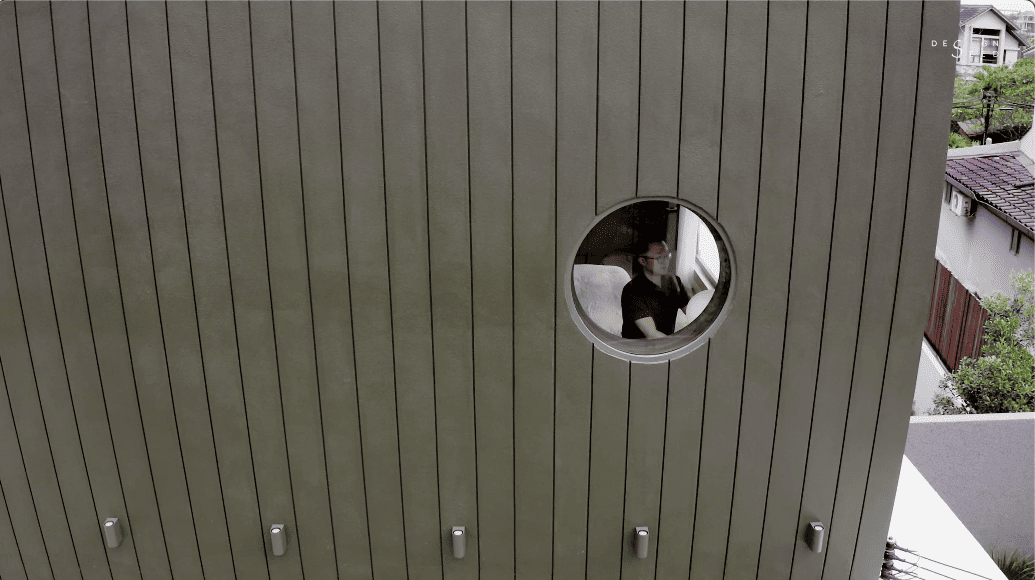
“My favorite space in this project has to be the kitchen. To not only allow natural lighting to come from the side of the home, the kitchen was designed to have an interesting skylight feature. Paired with a tranquil view of a private garden at the rear, the kitchen area feels lively at all times. Complimenting the rustic design concept of a modern farmhouse, the black and white mosaic flooring creates an engrossing vibe that is also very practical to avoid slippery floors in a kitchen.”
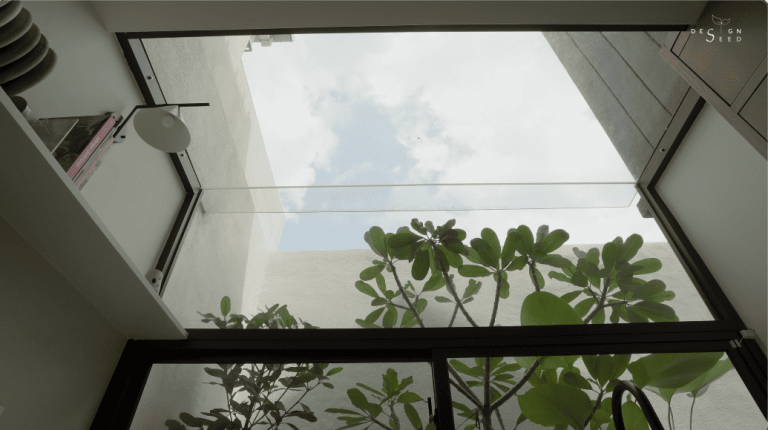


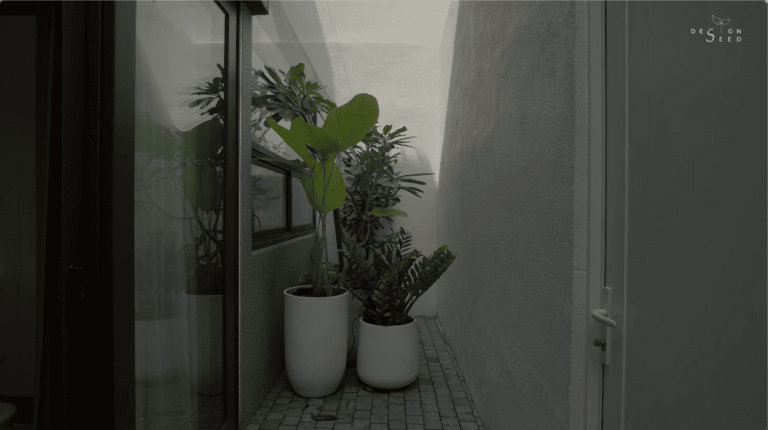
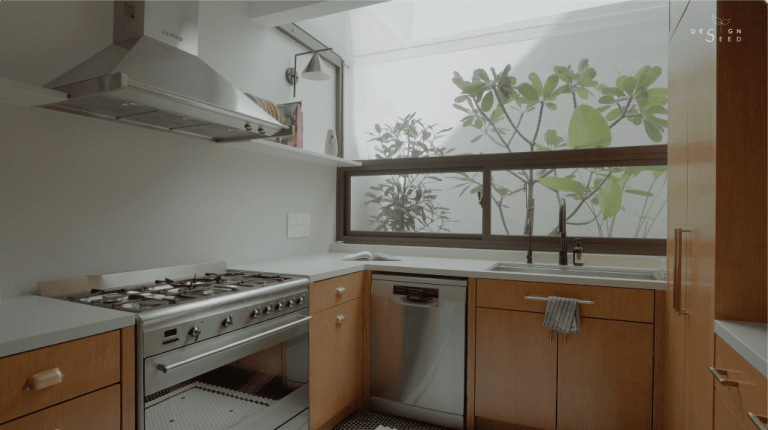
For a house with 3 children, I have to say this house is extremely organized. Behind every cabinet or door, things are organized in an absolutely orderly fashion.
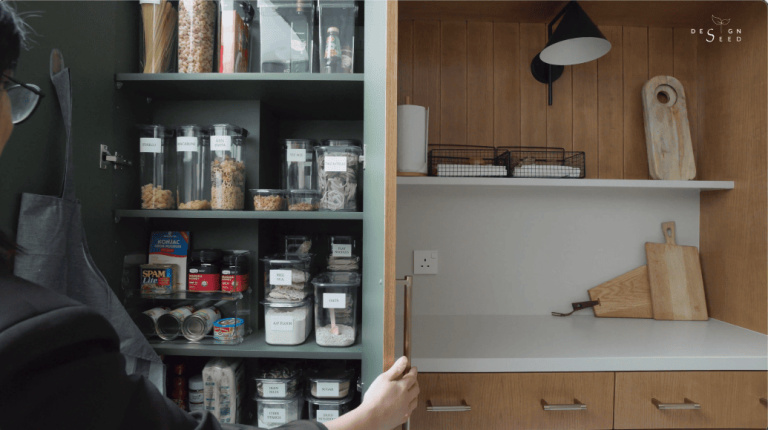
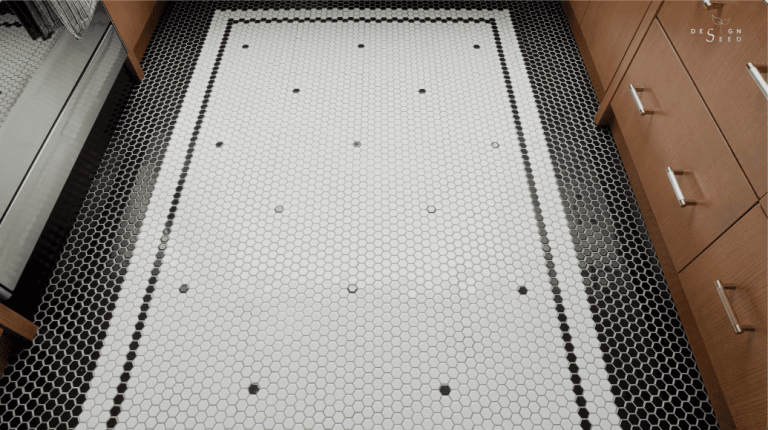
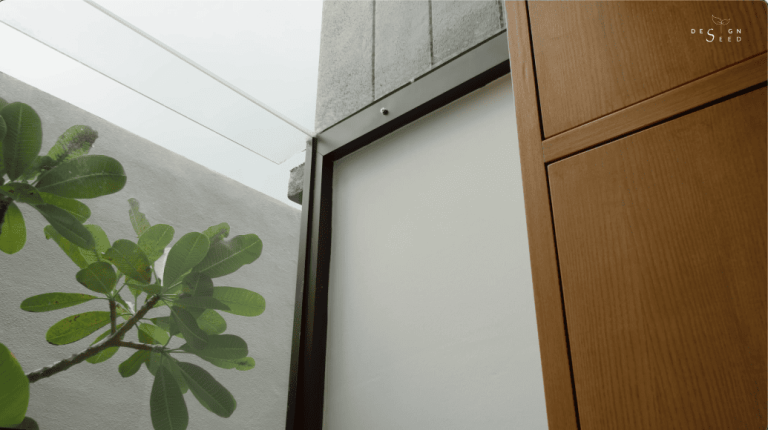
“The windows along the side with the groove lines on the facade—first of all, you want to have the groove line spaced nicely throughout the whole elevation, and then wanted to plan such that the windows are sized to line up with the grooves. Such small detail—some would think no one’s going to notice—but it really does make a difference when you look from outside.”
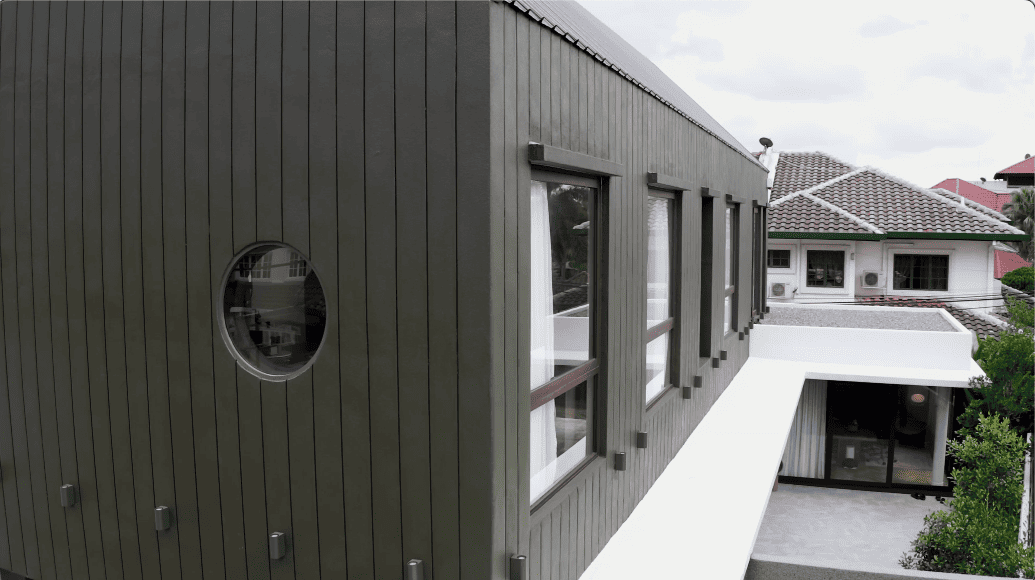
“Most laundry areas are designed to be at the rear bottom of the house. Why is that? Why can’t we have laundry rooms on the upper levels, where our laundry need not be carried up and down? In the ‘KAMI’ house, the laundry area is designed to be at the upper level, with a skylight just above it. As a matter of fact, the entire first floor is designed with a stretch of skylight that spans across the entire roof, from above the master bathtub, going across the stairwell, and all the way to above the laundry area.”

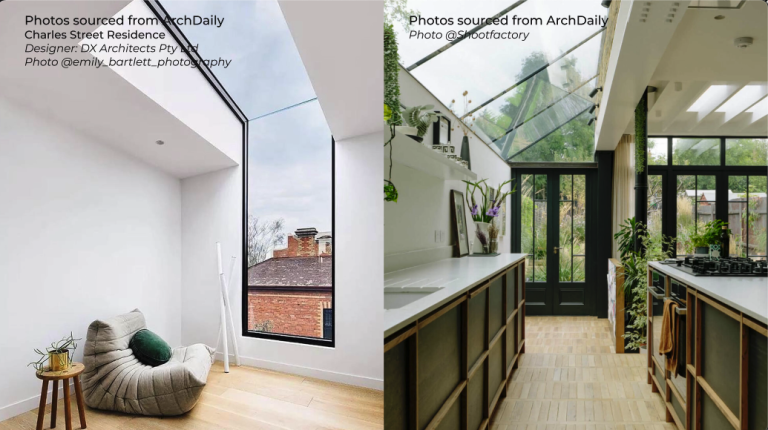
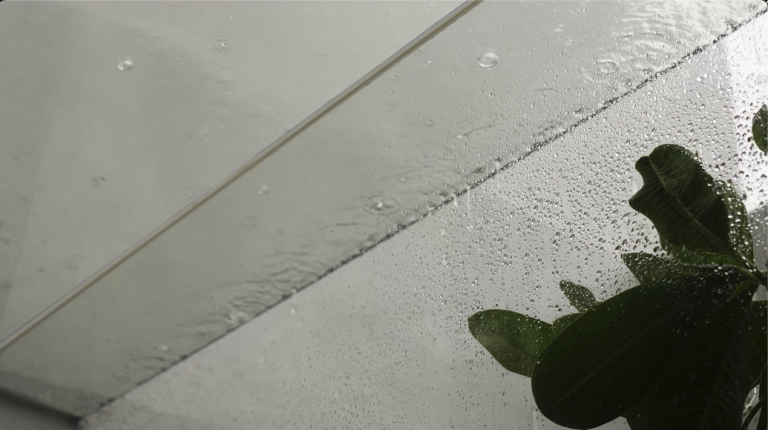
That explains why the entire house doesn’t require artificial lighting during the day at all. Same with the skylight of the kitchen. You will notice that the skylight actually overhangs from the window. It doesn’t look as neat as having a frameless corner, but it’s more practical. A lot of things actually—practicality will triumph over aesthetics.
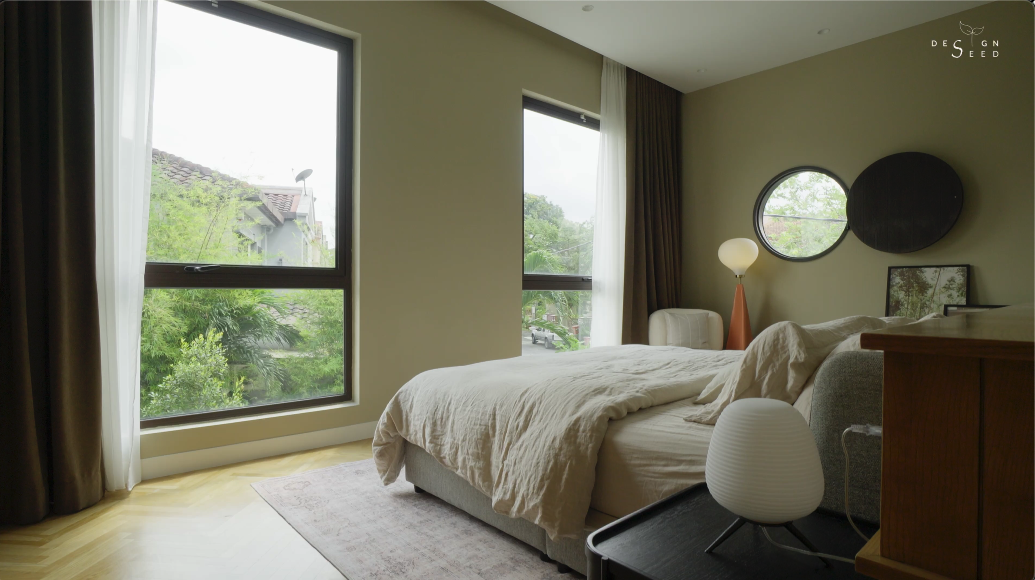
“So the way we do our plan just invites in a lot of natural ventilation, a lot of natural lighting. We don’t get much sunlight on this side of the house, that’s why we placed all our windows here. For upstairs, we used top-hung windows because, one, we rarely open the windows to their maximum angle anyway, and secondly, it frames the greenery nicely because it has minimal frames.”
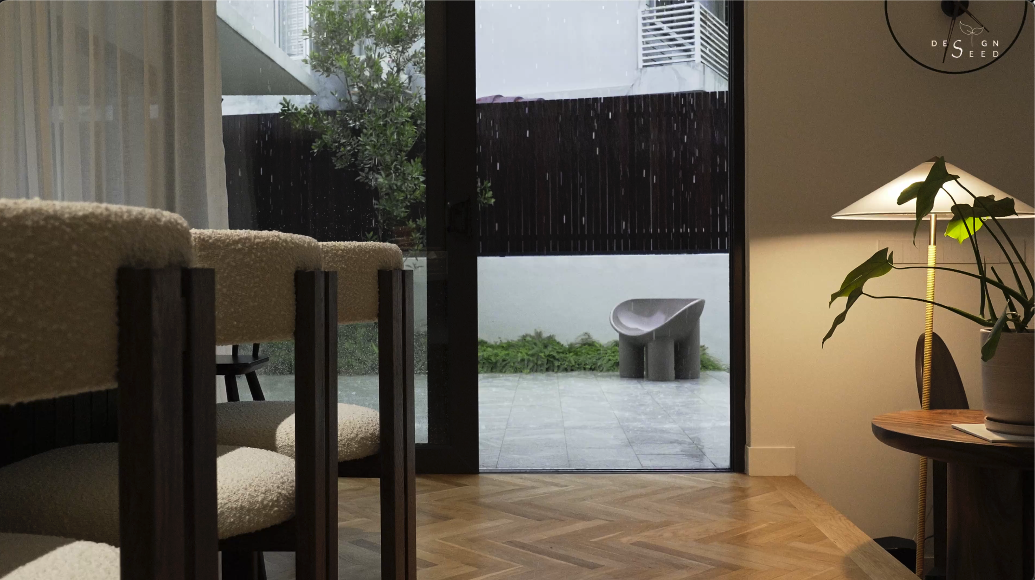
“As for downstairs, we internalized the side garden into a courtyard, so then the large sliding doors make sense because they allow us to extend our living space, both visually and physically, while maintaining privacy.”
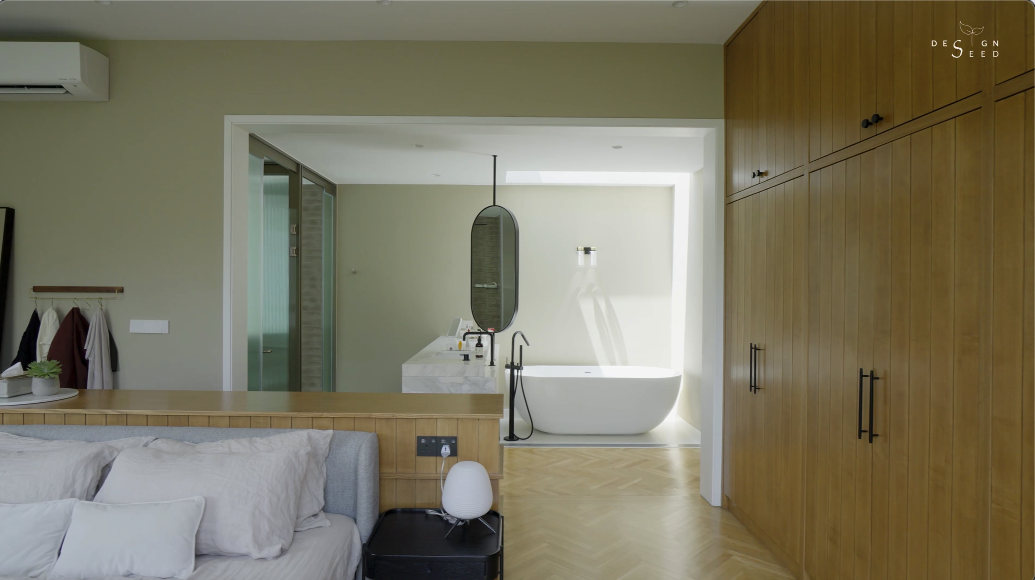
“Most would often think that a bathroom in a terrace house could only forcefully fit a small bathtub, but look at this transformation! This is only possible because of the open-concept bathroom. The master bedroom has an impressive view of the bathtub, and a functional and large counter that functions as a dressing table and storage cabinet.”
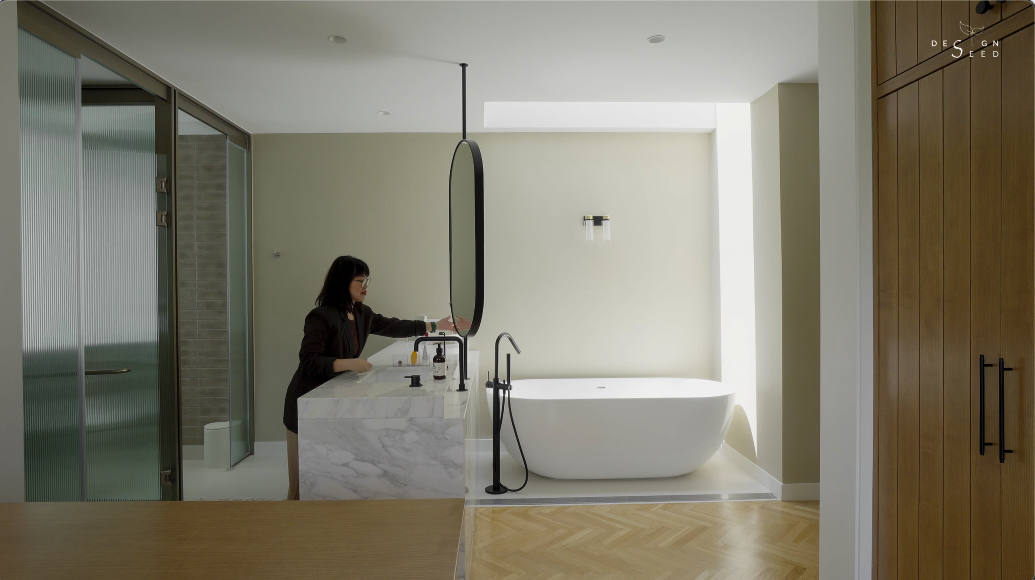
I like to be able to easily have the flexibility to use the basin when someone’s in the shower. Even the shower and the WC are separated now, so we don’t have to fight over who’s using the toilet. Everything just feels more spacious and bright, and we actually added a skylight directly above the bathtub just to give you a very nice lighting feature.
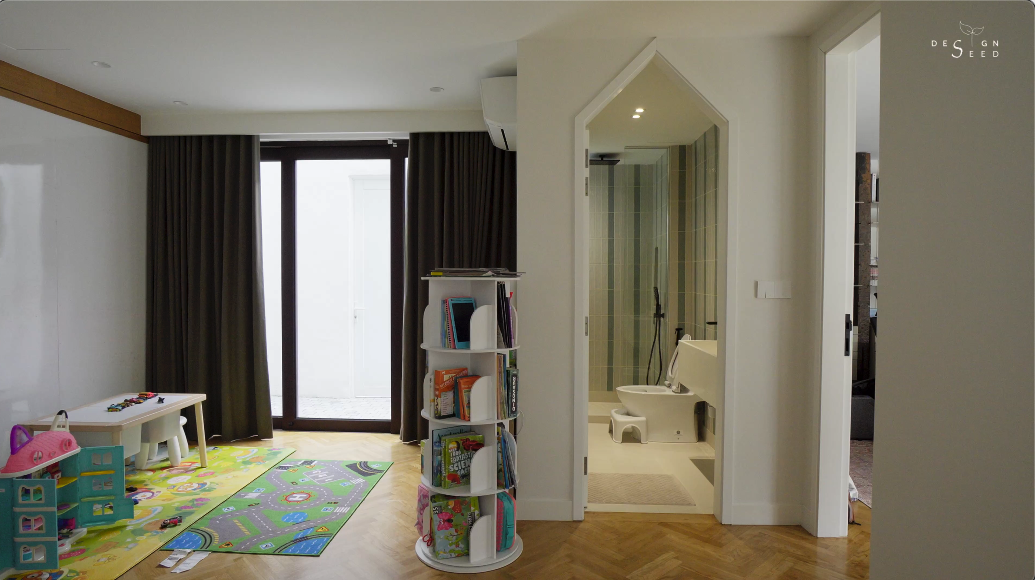
“Other than the master bathroom that’s imposing, the other bathrooms in the house have their own uniqueness too. The upstairs bathroom, especially for the kids, we wanted something that’s a bit bright and more playful, so we went with the herringbone mosaic as well, which sort of has a connection to the herringbone timber floor as well.”

“Like he said, the kids’ bathroom—we wanted it to be more playful but also classic with neutral colors. So, it’s a dark brown—not too childish because we know they’re going to grow older.”

“The rooms as well—we didn’t bother designing or having any built-ins in the rooms because we want them to be able to design the rooms themselves when they’re old enough. Whereas for downstairs, we know it’s for guests, so obviously we wanted to be even more funky, because these are all the places guests will use the toilet. So, we have this green and beige sort of tile, and we have this really cute door that reflects the architecture as well.”
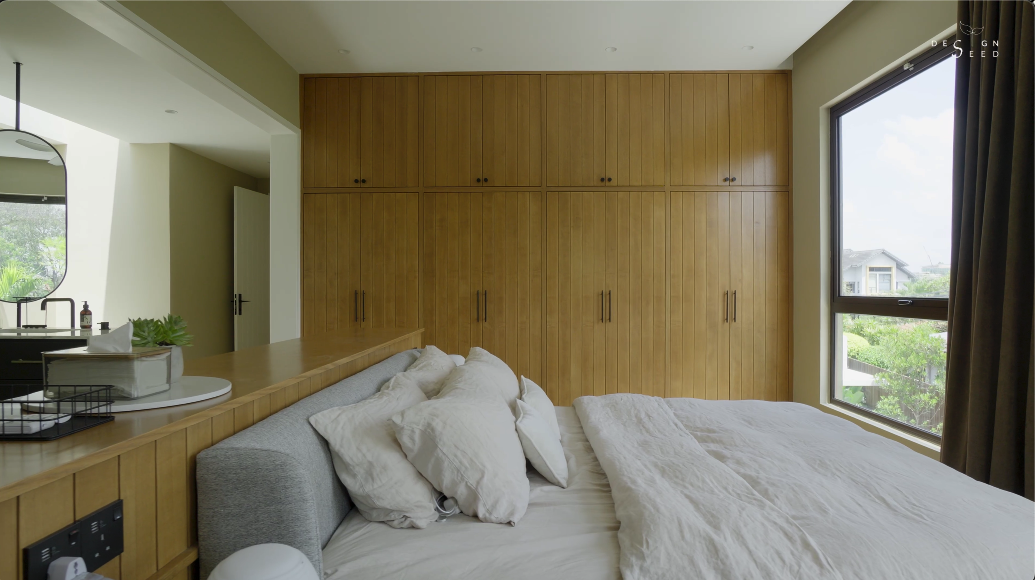
“I mean, in a way, this house embodies our entire life’s work. Literally, what we did for every client we had—it’s everything. It’s a learning process, and it makes us who we are today. So, that’s why we just love every second of it here.
Because we’re always designing for clients, there are some things that we have in mind that we want to explore, but not everyone will be willing to try that. That’s the fun of being able to design your own house. As architects, we can try this ourselves.”
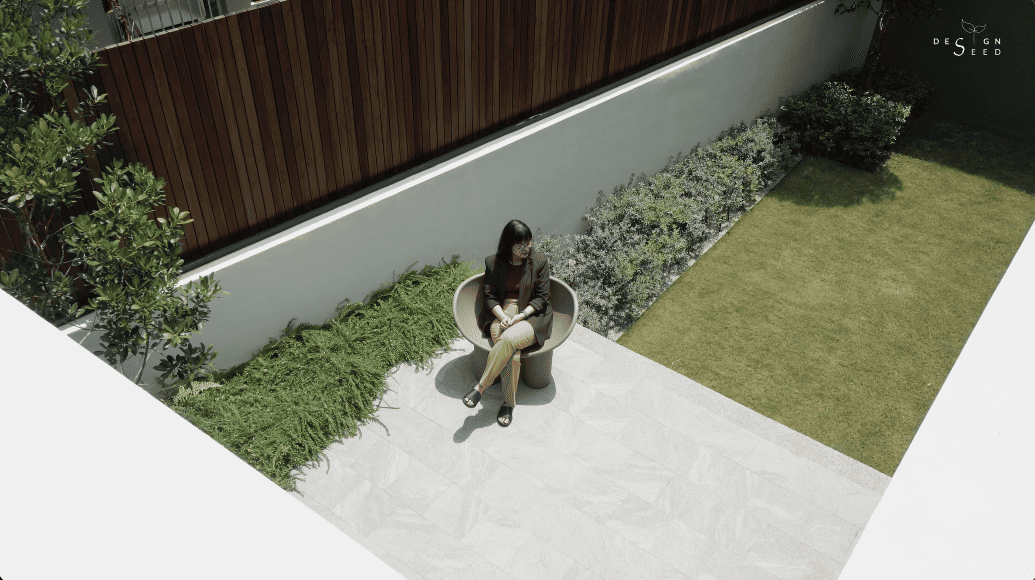
Malaysia is a country that is heavily exposed to extreme rain, strong winds, and sunny weather throughout the year. Leaves blocking the drains and water gutters would result in significant water leakages due to our country’s cloudbursts.
This project is an interesting example of innovative ways to improve modern architecture, adapting to our tropical climate.

For more beautiful green houses, check out the R House, a stunning family home surrounded by a swimming pool in tropical modernist design.
Thank you for taking the time to read this Article. Stay tuned for more updates!


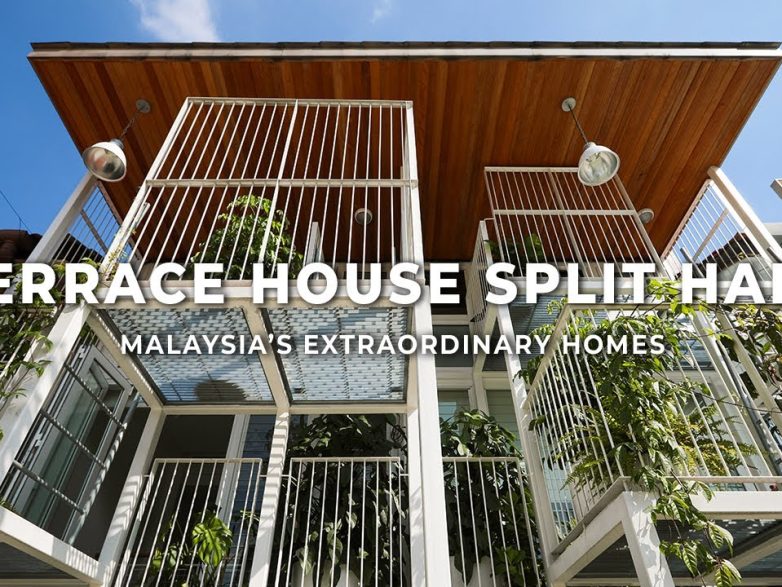
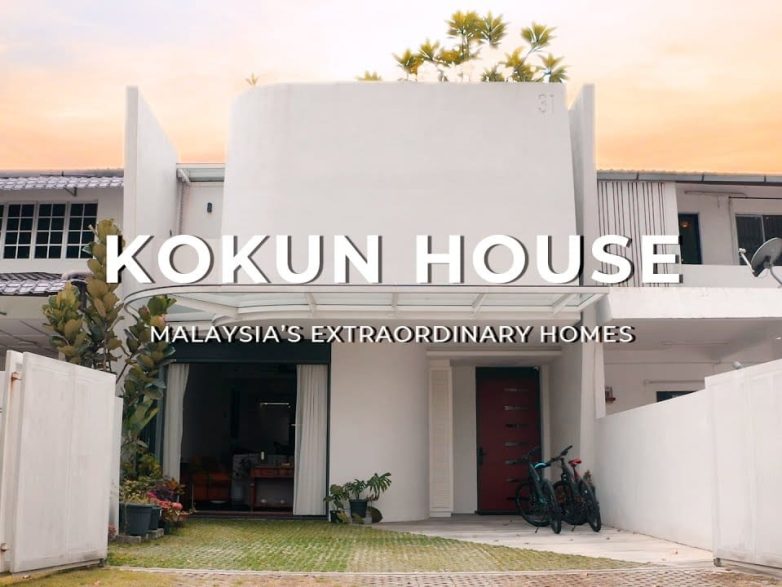







Teknik Informatika
27/07/2025How does the hidden garden concept in the architect’s house change the layout of the house and what is the main function of the garden?
Super Admin
07/08/2025Hi, thanks for reading our story. The architect reimagined the side garden as a central courtyard and seamlessly integrated it with the living areas through large sliding doors — bringing light, air, and a visual extension of space while maintaining privacy. This hidden garden acts as both a buffer and a tranquil, secure oasis for the family (especially for the kids to play), enhancing ventilation, daylight, and everyday comfort without compromising on safety. The garden also greatly elevates the quality of life for the family, improving mood and atmosphere.